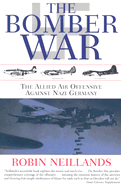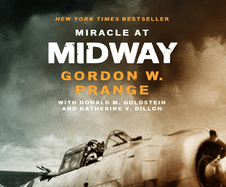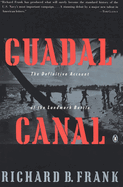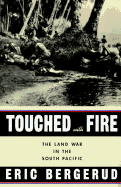Edition
ISBN:
081332985X /
ISBN-13:
9780813329857
Book Details
Seller
Sort
U.K./EUR Sellers
Price: Low to High
Price: High to Low
Condition
Condition: Reverse
Pub Date
Pub Date: Reverse
Sellers Near Me
Edition: 1999, Basic Books
Hardcover,
Good
Details: ISBN:
081332985X
ISBN-13:
9780813329857
Publisher:
Basic Books
Published:
1999
Language:
English
Alibris ID:
18176263730
Shipping Options: Standard Shipping: $4.61
Choose your shipping method in Checkout. Costs may vary based on destination.
Seller's Description: Good. Missing dust jacket; Pages can have notes/highlighting. Spine may show signs of wear. ~ ThriftBooks: Read More, Spend Less.
Hide Details ▴
Edition: 1999, Basic Books
Hardcover,
Good
Details: ISBN:
081332985X
ISBN-13:
9780813329857
Publisher:
Basic Books
Published:
1999
Language:
English
Alibris ID:
18167935940
Shipping Options: Standard Shipping: $4.61
Choose your shipping method in Checkout. Costs may vary based on destination.
Seller's Description: Good. Pages can have notes/highlighting. Spine may show signs of wear. ~ ThriftBooks: Read More, Spend Less.
Hide Details ▴
Edition: 1999, Basic Books
Hardcover,
Fair
Details: ISBN:
081332985X
ISBN-13:
9780813329857
Publisher:
Basic Books
Published:
1999
Language:
English
Alibris ID:
18180092690
Shipping Options: Standard Shipping: $4.61
Choose your shipping method in Checkout. Costs may vary based on destination.
Seller's Description: This item is fairly worn, but continues to work perfectly. Signs of wear can include aesthetic issues such as scratches, dents, worn corners, bends, tears, small stains, and partial water damage. All pages and the cover are intact, but the dust cover may be missing, if applicable. Pages may include excessive notes and highlighting, but the text is not obscured or unreadable. Satisfaction Guaranteed.
Hide Details ▴
Edition: 1999, Basic Books
Hardcover,
Fair
Details: ISBN:
081332985X
ISBN-13:
9780813329857
Publisher:
Basic Books
Published:
1999
Language:
English
Alibris ID:
18168029826
Shipping Options: Standard Shipping: $4.61
Choose your shipping method in Checkout. Costs may vary based on destination.
Seller's Description: Fair. Connecting readers with great books since 1972. Used textbooks may not include companion materials such as access codes, etc. May have condition issues including wear and notes/highlighting. We ship orders daily and Customer Service is our top priority!
Hide Details ▴
Edition: 1999, Basic Books
Hardcover,
Fair
Details: ISBN:
081332985X
ISBN-13:
9780813329857
Publisher:
Basic Books
Published:
1999
Language:
English
Alibris ID:
18123903232
Shipping Options: Standard Shipping: $4.61
Choose your shipping method in Checkout. Costs may vary based on destination.
Seller's Description: Fairly worn, but readable and intact. If applicable: Dust jacket, disc or access code may not be included.
Hide Details ▴
Edition: 1999, Basic Books
Hardcover,
Fair
Details: ISBN:
081332985X
ISBN-13:
9780813329857
Publisher:
Basic Books
Published:
1999
Language:
English
Alibris ID:
17541775440
Shipping Options: Standard Shipping: $4.61
Choose your shipping method in Checkout. Costs may vary based on destination.
Seller's Description: Fair in Good jacket. Size: 6x2x9; Thick hardcover with dust jacket. Gentle odor. Book with binding slanted/cocked. Pages unmarked, gentle wear.
Hide Details ▴
Edition: 1999, Basic Books
Hardcover,
Good
Details: ISBN:
081332985X
ISBN-13:
9780813329857
Publisher:
Basic Books
Published:
1999
Language:
English
Alibris ID:
18167937028
Shipping Options: Standard Shipping: $4.61
Choose your shipping method in Checkout. Costs may vary based on destination.
Seller's Description: Good. Former library book; Pages can have notes/highlighting. Spine may show signs of wear. ~ ThriftBooks: Read More, Spend Less.
Hide Details ▴
Edition: 1999, Basic Books
Hardcover,
Very Good
Details: ISBN:
081332985X
ISBN-13:
9780813329857
Publisher:
Basic Books
Published:
1999
Language:
English
Alibris ID:
18190094294
Shipping Options: Standard Shipping: $4.61
Choose your shipping method in Checkout. Costs may vary based on destination.
Seller's Description: Very good. Connecting readers with great books since 1972! Used books may not include companion materials, and may have some shelf wear or limited writing. We ship orders daily and Customer Service is our top priority!
Hide Details ▴
Edition: 1999, Basic Books
Hardcover,
Very Good
Details: ISBN:
081332985X
ISBN-13:
9780813329857
Publisher:
Basic Books
Published:
1999
Language:
English
Alibris ID:
17568753951
Shipping Options: Standard Shipping: $4.61
Choose your shipping method in Checkout. Costs may vary based on destination.
Seller's Description: Near Fine in Near Fine jacket. Binding Tight Pages Clean Light Edge Wear.
Hide Details ▴
Edition: 1999, Basic Books
Hardcover,
Good
Details: ISBN:
081332985X
ISBN-13:
9780813329857
Publisher:
Basic Books
Published:
1999
Language:
English
Alibris ID:
17624396913
Shipping Options: Standard Shipping: $4.61
Choose your shipping method in Checkout. Costs may vary based on destination.
Seller's Description: Good. Access codes and supplements are not guaranteed with used items. May be an ex-library book.
Hide Details ▴









